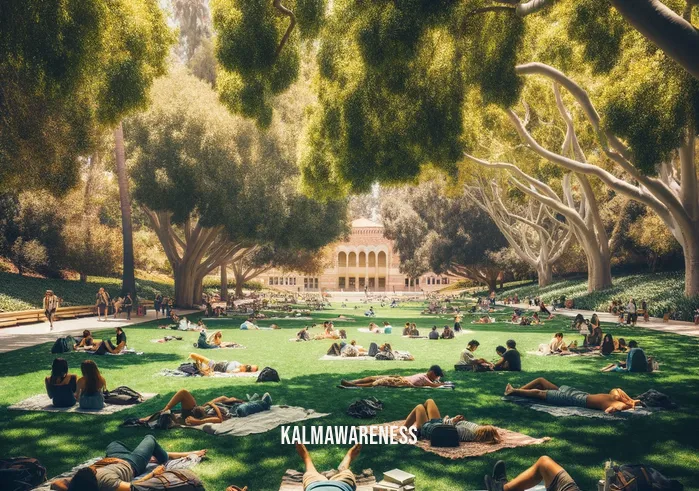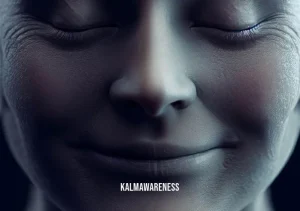The UCLA Nap Map: Your Gateway to Enhanced Well-being
In our fast-paced world, the importance of health and well-being can’t be understated. The pressures of academia and life’s general hustle often leave us feeling drained and overwhelmed. For students and faculty at the University of California, Los Angeles (UCLA), a unique solution has emerged to counteract this fatigue: the UCLA nap map. This innovative concept encourages napping as a wellness strategy, promoting both mental clarity and overall health. This article aims to provide a comprehensive guide on the benefits of napping, how mindful practices can enhance your rest, and the invaluable resources the UCLA nap map offers.
Why Napping Matters
The age-old adage that “sleep is the best meditation” finds itself deeply rooted in science. A well-timed nap, even for a mere 15 minutes, can revitalize your senses, enhance cognitive functions, and boost overall mood. As research suggests, this short-duration rest not only fills the sleep deficit but also equips us with the much-needed energy to navigate the day effectively.
But what exactly happens during these power naps?
Our brain undergoes a mindful movement during sleep, clearing away the debris of daily wear and tear, refining our thoughts and memories, and rejuvenating our mental faculties. This process is essential for our overall well-being.
Mindfulness and Sleep: An Interconnected Duo
While napping offers numerous benefits, combining it with mindful practices can maximize its effects. For instance, floating meditation allows one to enter a deep state of relaxation. This method employs both physical and mental relaxation techniques to immerse oneself into a serene state.
Similarly, EMDR meditation offers another avenue to deepen one’s rest. EMDR, or Eye Movement Desensitization and Reprocessing, typically used as a therapeutic technique for trauma patients, can be a powerful tool to harness the benefits of mindful rest.
Further, the art of being aware and relaxed in tandem can significantly boost the quality of your nap. By integrating mindfulness into your napping routine, one can achieve a peaceful state of mind, free from worry and distractions.
Napping at UCLA: How the Map Guides You
The UCLA nap map, a brilliant initiative, recognizes the invaluable interplay between sleep and mindfulness. Students and staff now have designated zones, pinpointed on the map, ensuring they find the perfect spot to rejuvenate. Whether it’s a bed in the clouds or a quiet corner on campus, the map promises a restful experience.
In essence, UCLA’s endeavor isn’t just about providing physical spaces but also about fostering a culture that prioritizes mental health and well-being. It’s a testimony to understanding that mindful breaths combined with restful sleep can lead to peak performance in academics and life.
Incorporating Other Techniques
While napping and meditation go hand in hand, there are various other techniques that can be woven into this wellness tapestry. Some may find solace in hand yoga poses, while others might benefit from binaural beats for migraine. From understanding the 256 Hz benefits for healing and relaxation to diving deep into soles of the feet meditation, the realm of relaxation techniques is vast and varied.
Conclusion
Our introduction to the UCLA nap map, its significance, and the intertwining of sleep with mindfulness sets the stage for a deeper exploration in subsequent segments. Whether you’re a student seeking a boost in productivity or someone simply aiming for holistic well-being, understanding the art and science of napping, as underscored by the UCLA initiative, can be transformative.
Stay with us as we delve deeper into the myriad of relaxation techniques, scientific insights, and the broader implications of the UCLA nap map in our next chapter. You’re just one click away from a world of enhanced wellness and peace.

Navigating the UCLA Nap Map: Key Zones and Benefits
The UCLA nap map is more than just a simple guide to find the perfect nap spot on campus. It’s a testament to UCLA’s dedication to promoting student and faculty well-being, understanding the crucial role that rest plays in academic and personal success. This chapter seeks to dive deeper into this innovative tool, providing readers with a detailed breakdown of key zones and their inherent benefits.
The Layers of the UCLA Nap Map
At its core, the UCLA nap map is a comprehensive tool that categorizes napping zones based on various criteria, ensuring every individual finds a space tailored to their specific needs. Here’s a breakdown:
Accessibility: Some zones are more accessible than others, suitable for those in a rush.
Ambiance: Can you meditate while high on peacefulness? Some areas are designed for deep relaxation, equipped with dim lights and soft music.
Duration: Whether you’re aiming for a quick power nap or a prolonged rest, there’s a designated spot for you.
Facilities: Certain zones come equipped with amenities such as mats or recliners, facilitating a more comfortable nap experience.
Mapping Your Needs: A Quick Guide
To offer a clearer perspective, let’s examine some of the standout zones on the UCLA nap map.
| Zone Name | Best For | Special Features |
|---|---|---|
| Cloud Haven | Deep relaxation | Soft beds mimicking beds in the clouds |
| Zen Corner | Quick power naps | Close to academic buildings, facilitating mindful breaths before or after classes |
| Serenity Space | Meditation | Equipped with u-relax moving chairs and soundproofing |
| Harmony Hall | Extended naps | Tailored ambiance with binaural beats for migraine relief |
| Peaceful Passage | Versatility | A mix of soft recliners and mats, suitable for both naps and flight rising meditation |
Benefits Beyond Rest: The Wholesome Experience
While the primary goal of the UCLA nap map is to facilitate rest, its influence stretches beyond mere sleep. Here’s how:
Enhanced Productivity: A rested mind is more alert and can process information faster, leading to improved academic performance.
Emotional Balance: Regular napping, especially in serene zones, can help in managing stress and attaining a peaceful state of mind.
Holistic Well-being: Incorporating elements of hand yoga poses and soles of the feet meditation, certain zones promote overall mental and physical wellness.
Broadening the Horizon: Future Additions
The UCLA nap map isn’t static. As the university expands and evolves, so does the map. There’s ongoing research and feedback collection to continually refine and add more zones. This ensures that as the community grows, everyone’s napping needs are catered to.
Conclusion
The UCLA nap map, in all its glory, is a brilliant testament to the university’s commitment to health and well-being. By understanding its layers, zones, and the manifold benefits they offer, students and faculty can harness the tool to its full potential, ensuring they get the rest they need amidst their busy schedules.
With a clear comprehension of the nap map in our arsenal, the next chapter delves into the scientific rationale behind such initiatives. What does research say about the intersection of napping, productivity, and overall well-being? Continue reading to uncover the fascinating insights science offers on this subject.

Drawing Hope from the UCLA Nap Map: Stories of Renewed Energy
The UCLA Nap Map isn’t just a directory of places to rest – it’s a testament to the university’s commitment to the well-being of its community. Beyond the obvious benefits of rest and rejuvenation, this map has served as a beacon of hope and inspiration for many. Through quotes, real-life narratives, and intrinsic values, this chapter seeks to shine a light on the deeper impact that this initiative has had on the lives of its users.
Quotes That Resonate
Throughout its implementation, the UCLA Nap Map has received myriad testimonials highlighting its influence. Here are some that stand out:
“In the midst of academic chaos, the Nap Map was my sanctuary. It taught me the art of pause, and in those moments, I found clarity.” – A UCLA Senior
“I once read in The Mindfulness Prescription for Adult ADHD about the importance of mindful rest. The Nap Map brought that lesson to life for me.” – A UCLA Faculty Member
“Taking intentional breaks isn’t about laziness. It’s about self-awareness and respect. Every time I consult the Nap Map, I’m reminded of this valuable lesson.” – A Graduate Student
Stories of Renewed Vigor
The inspiration derived from the UCLA Nap Map is far-reaching. Here are a few accounts that showcase its transformative power:
Maya’s Journey with EMDR Meditation: Maya, a sophomore, battled anxiety, often finding it difficult to focus on her studies. Introduced to EMDR meditation through the Nap Map’s recommended zones, she started practicing it during her breaks. The combination of mindful rest and this meditation technique greatly reduced her anxiety levels, improving her overall well-being.
David’s Introduction to Floating Meditation: David, an engineering student, was notorious for pulling all-nighters. His health started deteriorating due to a lack of sleep. But a serendipitous encounter with the Nap Map led him to a zone promoting floating meditation. This powerful relaxation technique rejuvenated him, dramatically transforming his sleep patterns and academic performance.
Prof. Eleanor’s Embrace of Kid Calm Techniques: Prof. Eleanor, while researching tools to help her students de-stress, stumbled upon the Nap Map. She not only started using it for her personal breaks but also integrated Kid Calm techniques into her classes. This resulted in heightened engagement and a more relaxed learning environment.
Hope Beyond The Map
It’s evident that the UCLA Nap Map is more than just a resting guide – it’s an initiative that fosters mental peace, improved concentration, and emotional well-being. By actively promoting the importance of rest, it serves as a reminder that taking time for oneself isn’t a luxury but a necessity.
With various tools like relaxing and being aware or understanding the 256 Hz benefits, the Nap Map encourages users to adopt practices that not only benefit them in the short run but also instill lifelong habits of mindfulness and self-care.
Conclusion
The stories and testimonials linked to the UCLA Nap Map underscore the undeniable fact that, sometimes, the simplest interventions can have the most profound impact. It’s not just about locating a quiet corner to nap, but about understanding the significance of slowing down in our fast-paced lives.
Stay with us, for in the next chapter, we turn our focus to the science behind rest. We’ll delve into why intentional breaks, like those endorsed by the UCLA Nap Map, are not just beneficial but essential for our cognitive, emotional, and physical well-being.
@
Decoding the UCLA Nap Map: A Closer Look
The UCLA Nap Map is an emblematic tool that signifies much more than mere restful spots. It is a bridge connecting physical rest to mental rejuvenation. In this chapter, we’ll break down the components of the UCLA Nap Map, how it aligns with well-being practices, and why it stands out as an essential resource for both students and faculty.
Key Features of the UCLA Nap Map
Diverse Resting Zones: The map showcases a range of locations catering to different needs. Whether one requires a quiet spot for meditation or a shaded outdoor area for a power nap, the Nap Map has it all.
Integration with Mindful Practices: Not just a map for locating resting places, it also links to practices like Mindful Movement Sleep and guides on how to take the perfect 15-minute power nap.
User-friendly Interface: Simple to navigate, the map allows users to filter locations based on various criteria, ensuring they find the best spot that suits their specific requirements.
Alignment with Well-being Practices
The UCLA Nap Map seamlessly integrates principles from various wellness techniques:
Meditation: Many of the resting zones are conducive for practices like floating meditation or even the more unique flight rising meditation, allowing individuals to disconnect and find their inner peace.
Physical Relaxation: Concepts such as U-Relax Moving highlight the importance of combining mental relaxation with physical movement. The Nap Map includes spots that are ideal for stretching or practicing hand yoga poses during breaks.
Holistic Wellness: The map understands that rest isn’t just about sleep. Techniques such as soles of the feet meditation and sound therapies using binaural beats for migraine are incorporated, offering a comprehensive approach to rejuvenation.
The Distinctiveness of the UCLA Nap Map
To grasp the uniqueness of this tool, let’s draw a comparison:
Traditional Campus Maps: Primarily provide directions and locations of academic buildings, amenities, and recreational areas.
UCLA Nap Map: Goes beyond. It not only indicates where to rest but also how to rest. It’s backed by insights from resources like Meditation for Dummies and Jack Kornfield Meditation for Beginners, ensuring that the user gets the most out of their break.
Conclusion
The UCLA Nap Map, with its integrated wellness solutions and easy-to-use interface, is a testament to UCLA’s commitment to the holistic well-being of its community. By endorsing both mental and physical rest, the map is a quintessential tool in today’s fast-paced academic environment.
But our exploration doesn’t end here. In our final chapter, we’ll envision the future implications of such initiatives, not just at UCLA but in educational institutions worldwide. Join us as we paint a picture of a world where wellness and education walk hand in hand.
@
Reflecting on the UCLA Nap Map: A Beacon of Well-being
Navigating the intricate avenues of UCLA, it’s clear that the institution is not merely a hub of academic brilliance, but also a beacon for holistic well-being. And at the heart of this wellness initiative stands the UCLA Nap Map—a tool that encapsulates UCLA’s commitment to both the mental and physical well-being of its community.
Journeying Through the Map
Our exploration began with an introduction to this unique concept, showcasing how UCLA has gone beyond traditional academic offerings. As we delved deeper, we unearthed the intricate layers of the map, from its diverse resting zones to its alignment with various wellness techniques. It’s not just about finding a spot to rest; it’s about understanding how to rest effectively and meaningfully.
Throughout our journey, we’ve also highlighted the benefits of practices such as bed in the clouds and understanding the essence of attaining a peaceful state of mind. Each of these elements, intertwined with the essence of the UCLA Nap Map, reiterates the university’s commitment to nurturing not just the intellect, but the soul.
Final Thoughts
It’s indeed a breath of fresh air to see educational institutions taking concrete steps to prioritize student and faculty well-being. The UCLA Nap Map is not just a tool; it’s a statement, a testament to the fact that success isn’t merely about burning the midnight oil, but also about understanding when to pause, reflect, and rejuvenate.
The journey we embarked upon illuminated not just the nooks and crannies of UCLA’s campus but also the importance of balance in our daily lives. We live in an era of unrelenting hustle, where the race to achieve often blinds us to our own well-being. Yet, initiatives like the Nap Map serve as a gentle reminder that rest isn’t a luxury—it’s a necessity.
Looking Forward
Dear readers, as we wrap up this exploration, we urge you to take a moment to introspect. Embrace the practices, be it floating meditation or understanding the nuances of lying down meditation. Use these techniques, combined with the knowledge of the UCLA Nap Map, to find your unique balance.
Should you wish to revisit any section for clarity or simply to indulge once again in this enriching journey, feel free to dive back in. Also, explore more insightful articles and content in our magazine to continue your journey of self-discovery and well-being.
Thank You and Till Next Time!
Your time and attention are invaluable, and we appreciate you choosing to spend it with us. Here’s a promise: we will continue to bring forward such illuminating pieces, aiming to nurture both your mind and spirit. Until then, stay rested, stay mindful, and remember, there’s always a place for you to rest, reflect, and rejuvenate with the UCLA Nap Map.




